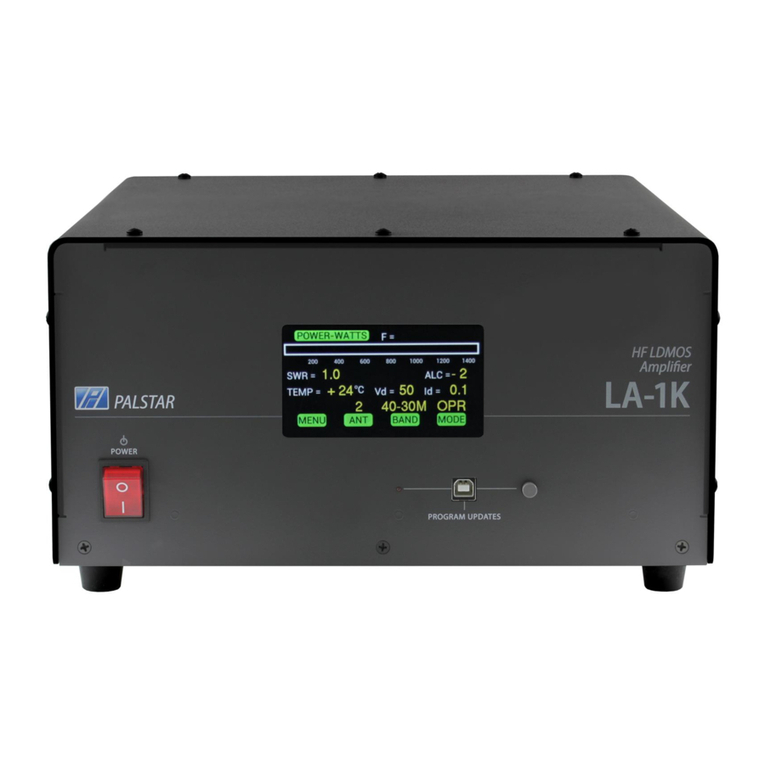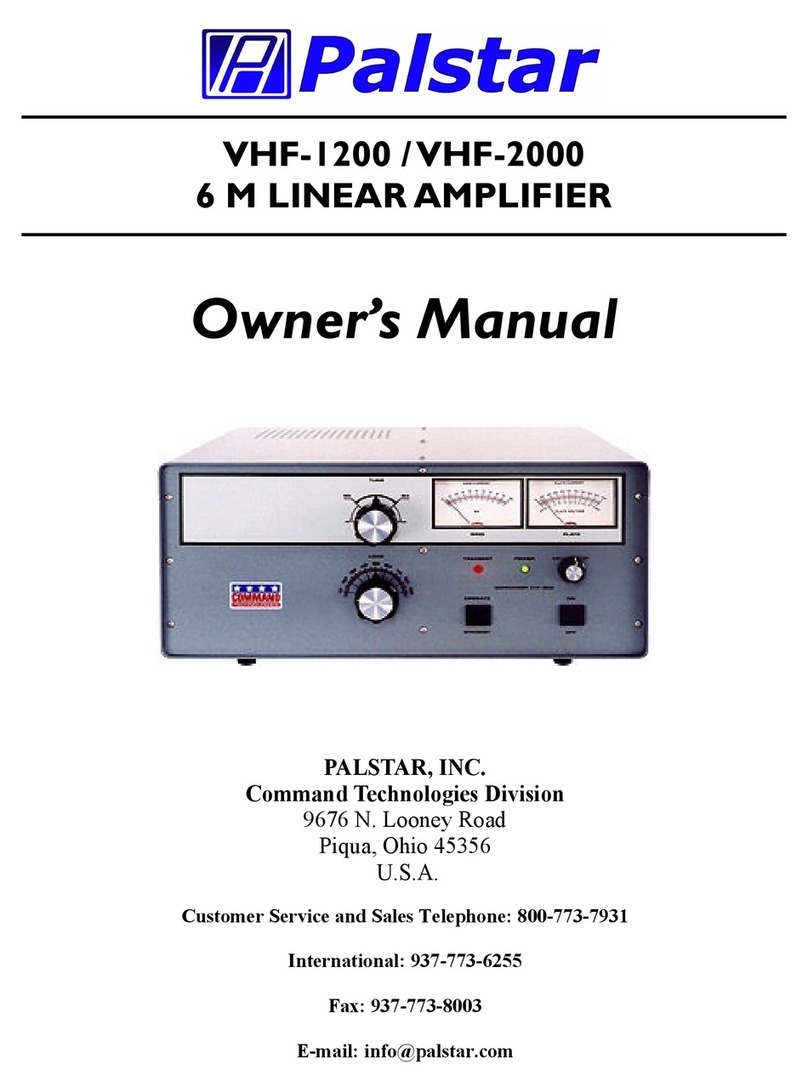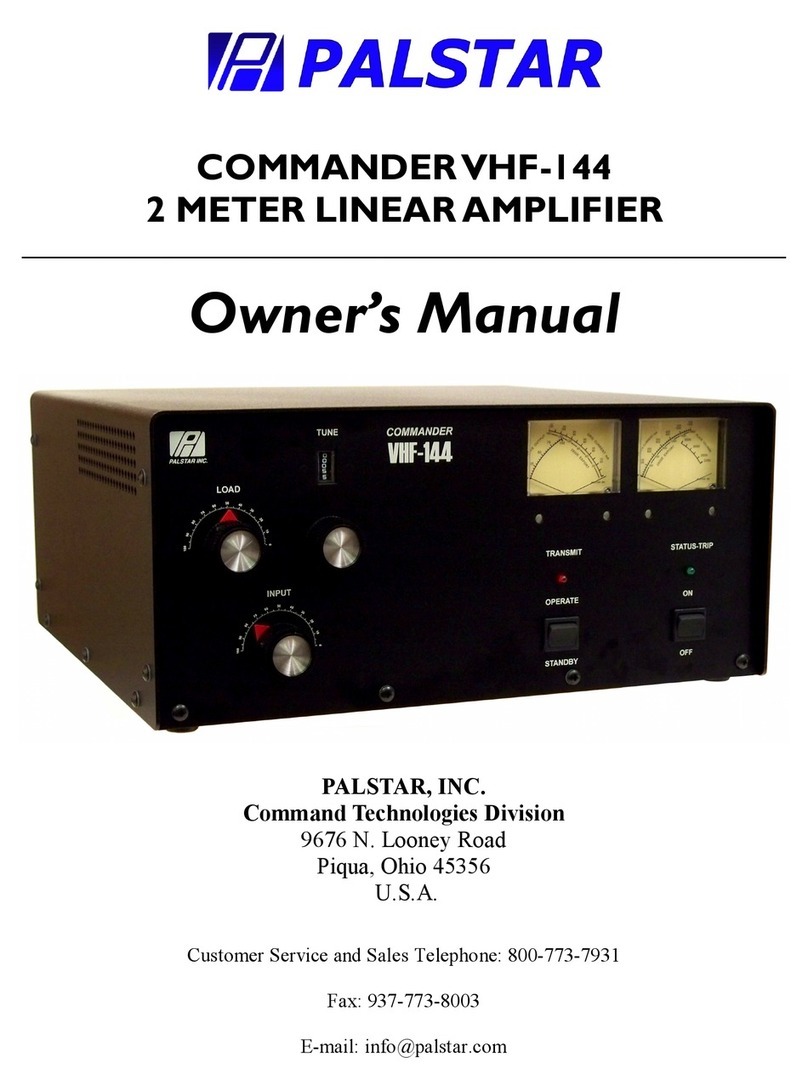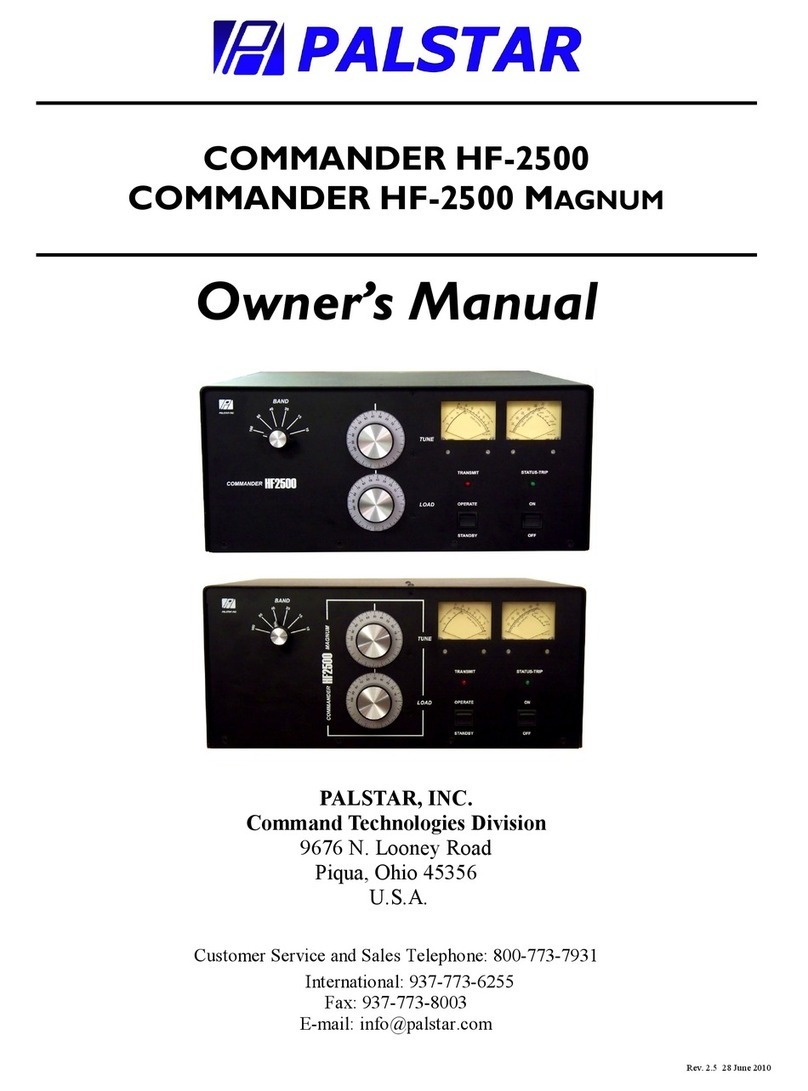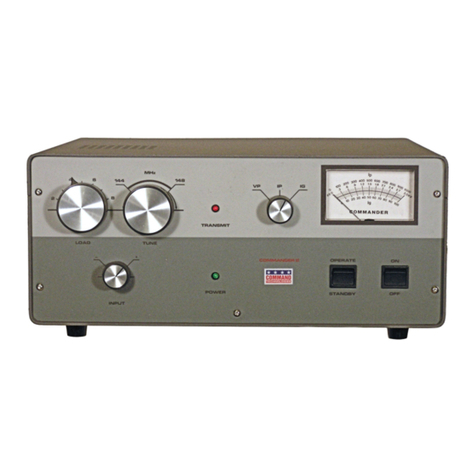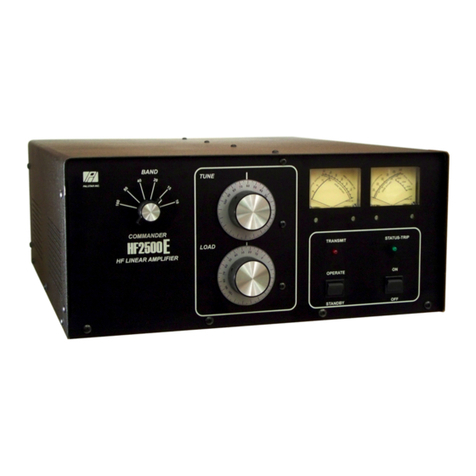
Page 1
• SSB POWER:
• CW MODE:
• FM/RTTY:
• AM:
• FREQUENCY RANGE:
• DISPLAY:
• INPUT DRIVE LEVEL:
• OUTPUT:
• ALC:
• GAIN:
• RF SENSING:
• RF OUTPUT:
• POWER SUPPLY:
• AC POWER:
• DC SUPPLY:
• POWER DEVICES:
• AUTO-PROTECT:
• COOLING:
• INTERMOD:
• PURE SIGNAL:
• CHASSIS:
• TOP COVER:
• DIMENSIONS:
• WEIGHT:
• DESIGN CONCEPT:
• WARRANTY:
LA-1K SPECIFICATIONS
Power levels up to 1000 W PEP
1000 W CW ICAS
500 W
250 W
1.8 to 54 MHz
Color TFT touch screen
45- 55W (all bands) 40-55W (typical), 60W max
3 x RF SO-239 or Type-N
Exciter power control
13 dB + or -1dB (nominal)
Auto band switching without band data
Cable from transceiver
Relay T/R switching
Internal medical grade
100-125VAC @ 15A or 200-250VAC @ 10A
NEMA 6-15R or NEMA 6-20R wall receptacle
50 VDC @ 42A
2 x 5600H 600W LDMOS
SWR/Short circuit/Over temperature
Variable speed fans (3)
Low IMD distortion > -35dB (typical)
Sample @ +10dBm @ 1kW output (rear panel)
.090 ga. aluminum
.090 ga. aluminum powder coated
12.75” W x 6.25” H x 16.5” D
27 lbs., 12.25 kg
Full compatibility with
Palstar HF-AUTO automatic tuner
One year
PALSTAR
Page 22
FAULT DISPLAY INDICATIONS
As noted below, these ashing fault displays clear automatically on next transmission,
when fault condition is corrected.
Note that TX shows on display any time that the PTT input line is grounded.
TX BYPASS SWR: The SWR has gone high during a transmission. It may do this with a
transient SWR fault (such as an arc fault on the antenna, or lightning arrestor) The SWR
reading may be low or high after tripping but the LA-1K STAYS in bypass until you unkey
the transmitter. The “BYPASS SWR” graphic will then continue to ash until transmit-
ting shows a lower SWR. Adjusting the antenna tuner while transmitting at high power
may trigger this indication. The LA-1K should always be in BYPASS for antenna tuner
adjustments.
SWR HIGH, TX WAIT displays: The ampli er will not key up until the SWR indication is
below 2.5:1. It is waiting for lower SWR before keying up. When you unkey, the display
continues ashing BYPASS SWR.
SWR low, TX wait displays: The ampli er is keyed on the PTT line but waiting for RF to
be applied before transmit mode completes. (In Operate Mode) This indication does not
occur in direct keying mode if band data is present.
BYPASS Id: This fault trips to protect the transistors whenever the drain current (Id) ex-
ceeds 45.9A. This may occur with a poor load SWR that places high capacitive reactance
on the LA-1K output. If the SWR cannot be adjusted to provide lower Id values, the
LA-1K drive level must be reduced to prevent tripping. Normal Id values should never
exceed 42A at 1,000 W carrier power.
BYPASS TEMP: The LA-1K heatsink temperature has exceeded 99°C. The LA-1K stays
locked in STANDBY until the temperature has dropped below 70° C. If the power to the
LA-1K is cycled the ampli er lockout may be reset immediately providing that tem-
perature is below 99°C. Make sure the LA-1K vents are not blocked. Reduce power if
necessary.
TX OVERDRIVE: The LA-1K has detected drive levels exceeding 70 W. It has bypassed
to protect the transistors from possible damage. Drive level should not exceed 60 W.
BYPASS FQ: This fault indication displays when MARS operators transmit on a lter
change over frequency. These are 2.002, 4.502, 9.002, and 22.002 MHz.
Frequency turns red, and the LA-1K won’t key: This can occur if you are transmitting
in a locked out frequency range such as 27 MHz CB band. The normal lockout window is
from to 25.983 MHz 28.001 MHz.
Note that if transmitting below 1.8 MHz, the LA-1K simply says TX BYPASS. It will not
operate in this frequency range. All matching adjustments must be completed at low
power.
